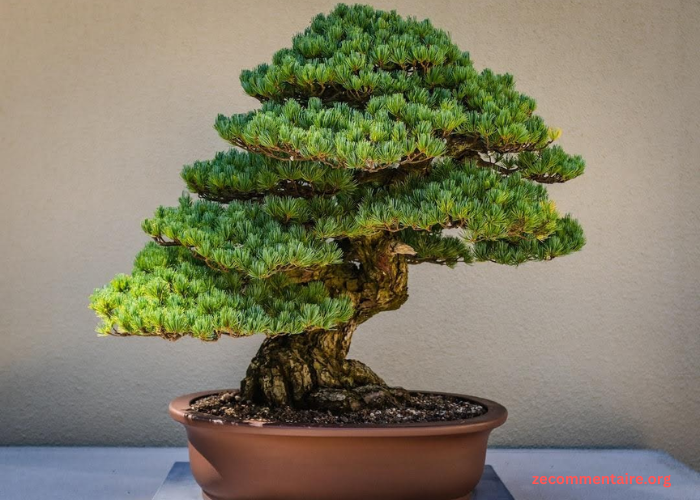Ever thought about adding a touch of tranquility to your garden? Why not consider creating a zen garden with bonsai tree designs?
This unique blend of simplicity and nature can transform any space into a serene retreat, inviting peace and mindfulness into your life. In this article, we’ll explore various foliage varieties and styling tips to help you cultivate a zen garden design that becomes your personal oasis.
Get ready to turn your garden into a testament to harmony and elegance!
Japanese Maple Bonsai (Acer Palmatum)
The Japanese Maple Bonsai, known scientifically as Acer Palmatum, is a popular choice for zen gardens due to its striking appearance and versatility. This type of bonsai showcases beautiful leaves that change color with the seasons, offering a dynamic element to your garden. It requires a bit of attention to maintain its shape and health, including regular pruning and adequate sunlight.
Caring for a Japanese Maple Bonsai involves ensuring it gets enough water without becoming waterlogged. During the hotter months, it’s crucial to protect the tree from excessive sunlight to prevent leaf burn.
Juniper Bonsai (Juniperus Spp.)
The Juniper Bonsai is another excellent choice for your zen garden. It’s known for its lush, green foliage and the ability to shape it into various forms. This bonsai is relatively easy to care for, making it a great option for both beginners and experienced gardeners.
Junipers thrive in well-drained soil and need plenty of sunlight. Regular pruning is also necessary to maintain its desired shape and promote healthy growth.
Chinese Elm Bonsai (Ulmus Parvifolia)
The Chinese Elm Bonsai, scientifically named Ulmus Parvifolia, stands out for its durable nature and attractive appearance. It features small, leathery leaves and a fine branch structure, making it a visually appealing addition to any zen garden. This plant is particularly admired for its ability to adapt to both indoor and outdoor environments.
Caring for a Chinese Elm Bonsai involves regular watering to keep the soil moist, but not overly saturated. It also benefits from full to partial sunlight exposure, ensuring it receives ample light for growth while avoiding the risk of leaf scorch.
Moss
Integrate moss as a ground cover or accent plant to add lushness and softness to your Zen garden. Moss thrives in shaded, moist environments and complements the tranquility of bonsai trees with its verdant green color and velvety texture. If you live in a drier climate, your care for bonsai trees should involve regular misting or placing a humidity tray near your moss to maintain optimal moisture levels for both plants.
Rock Garden
A rock garden is another wonderful way to bring a sense of calm to your space. It’s all about arranging rocks and small plants to create a peaceful, natural landscape.
Using different sizes and shapes of rocks can add interest to your garden. You can plant some low-maintenance plants around the rocks to add a bit of greenery.
Elevate Tranquility With a Peaceful Zen Garden With Bonsai Tree
Creating a zen garden with bonsai tree might seem like a big project, but it’s really about taking small steps to make a space that feels peaceful for you. Remember, there’s no rush.
Each bonsai tree you add brings its own bit of calm, and mixing them with moss and rocks just makes it all feel right. Think of this journey as a way to bring a slice of serenity into your life, bit by bit.
We hope this article was helpful to you. If you enjoyed it, be sure to check out our blog for more valuable information and resources.






